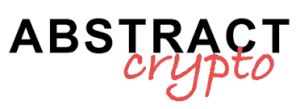The EOS blockchain is currently under attack by malicious actors who are exploiting a technique known as address poisoning to deceive users and steal funds. The blockchain security company SlowMist has raised an alarm regarding this fraudulent scheme, which involves sending small amounts of 0.001 EOS to poison the destination addresses of transactions.
Attack on the EOS Network: What is Address Poisoning and How Does It Work?
Address poisoning is an attack technique aimed at causing confusion among blockchain users by exploiting the similarity between legitimate and counterfeit addresses. The attackers send a small amount of cryptocurrency, in this case 0.001 EOS, to an address with a name almost identical to that of a real exchange or trusted wallet. The goal is to trick the user into mistakenly selecting the fake address in a future transaction, thus risking the loss of funds.
Examples of fake addresses identified by SlowMist:
- Fake: oktothemoon
Real: okbtothemoon – @okx - Fake: binanecleos
Real: binancecleos – @binance
These examples demonstrate how hackers create addresses almost identical to the original ones, making it difficult for users to spot the scam at a glance.
Why is this attack dangerous?
The attack is insidious because it exploits users’ inattention and trust in their normal transaction flows. Anyone who frequently uses EOS for transfers could fall victim to the deception simply by choosing an address stored in their transaction history without verifying it carefully.
Another critical aspect is that these attacks are difficult to detect at first glance. The difference between a real address and a fake one can be just one letter or a slight variation in the name, which makes phishing particularly effective.
How to protect yourself from Address Poisoning on EOS?
To avoid falling victim to these attacks, SlowMist recommends following some fundamental security practices:
- Always verify addresses manually – Before sending crypto, carefully check every character of the destination address.
- Avoid copying and pasting addresses without checking – Even if an address appears in the transaction history, always verify that it is correct.
- Use a whitelist for trusted addresses – Many wallets and platforms offer the possibility to save verified addresses.
- Pay attention to small incoming transactions – If you receive a negligible amount (like 0.001 EOS) from an unknown address, it could be an attempt at poisoning.
- Follow the security updates from the official platforms – Exchanges like Binance and OKX actively monitor suspicious activities and provide alerts to users.
Implications for the crypto world
The address poisoning attack on EOS is just the latest example of a long series of scams that threaten criptovalute users. This type of attack has already been observed on other blockchains, such as Ethereum, where hackers use similar methods to deceive users.
The incident highlights the importance of cybersecurity in the world of cryptocurrencies, especially in an era when the adoption of blockchains is rapidly growing. Awareness and caution are essential tools for protecting one’s digital assets.
Conclusions
The alarm raised by SlowMist demonstrates how necessary it is to remain vigilant when conducting transactions on blockchain. Address poisoning is a real threat, and EOS users must take security measures to protect their funds. The key to avoiding scams of this type is to always check addresses before sending cryptocurrencies and not blindly trust the transaction history.
Staying updated on emerging threats and adopting good security practices is essential for navigating the world of cryptocurrencies safely. Continue to follow SlowMist and other reliable sources to receive updates and advice on blockchain security.


